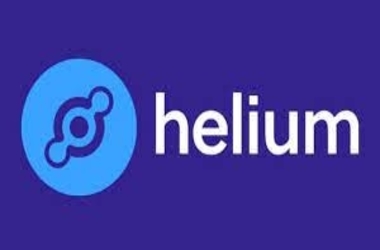 As interest for its projected move to the Solana blockchain grows, Helium has gained another 14% today. Currently valued at $5.40 on CoinGecko, HNT has had its 24-hour transaction volume increase 164% to $182 million.
As interest for its projected move to the Solana blockchain grows, Helium has gained another 14% today. Currently valued at $5.40 on CoinGecko, HNT has had its 24-hour transaction volume increase 164% to $182 million.
Helium is constructing a decentralized wireless network, but product innovation has not kept pace with the company’s audacious aim. A contributing factor for this may be the practical difficulty of deploying a network that can link at least several millions of Internet of Things (IoT) gadgets sans latency problems.
The suggestion to use the high-processing capacity Solana blockchain was first met with skepticism when it was first announced that the team had finally arrived on a solution to these problems. Since early August, the price of helium tokens has been fluctuating in a steeply dropping channel, but that trend began to reverse yesterday and continues today.
On the surface, the news from Solana should have been overwhelmingly encouraging for this Web3 effort. Upon further examination of the plan’s objective, it just became obvious that it was not precisely the unadulterated positive thing that the project’s proponents had hoped for.
A Helium Hotspot must be purchased in order to access the network. This demands an investment of many hundreds of dollars. As per Helium Tracker, each hotspot for linking IoT devices earns just $0.27 per day, so it will be considerable years before the investment becomes viable.
Hence, the economics are very unattractive, which likely reflects the larger argument that it may not find meaning to operate an IoT connection network on a blockchain. As others with a more in-depth grasp of the matter, including the proposal’s creators, recognized, the sooner Helium shifted its core operation from its native blockchain to a centralized system, the good.
If the suggestions are adopted, the two key features of the system, Proof of Coverage and Data Transfer Accounting, would be removed from the blockchain.
And here is the plan’s most important element:
Certain activities, notably Proof-of-Coverage and Data Transfer Accounting, are conducted on-chain under the present design. This information bottleneck may result in inefficiency concerns such as gadget join latencies and difficulties with data packet connections, which clogs up the Network and slows throughput. HIP 70 suggests migrating these activities to Oracles to overcome these difficulties and better consolidate the Infrastructure.”
Therefore, what will Solana be employed for if it is accepted as the future distributed ledger technology? It seems that the only remaining task for blockchain will be the accounting work on the awards distribution, which, it ought to be noted, is a very reasonable application for a blockchain.
Using blockchain to manage merely incentives may not be consistent with the core mission, but it seems much more feasible. So maybe this explains the rising interest in purchasing Helium. Obviously Solana has its own issues, and at times you might be excused for supposing that it is a public beta version rather than the final commercial version. Evidently, not a single month goes without a service disruption or issue on the Solana system.
Nevertheless, Solana is advancing, and with approximately 2,000 transactions per second, it is likely appropriate for rewards sharing. The precise effect of these novel economics on the valuation of the HNT token issued by Helium requires further clarity.
So possibly what we are currently witnessing on the market is an inversion of “buy the rumor, sell the news” in favor of “sell the news and purchase the rumor.” In simple terms, purchasers may be relying on Helium to develop a model that exposes HNT holders to the continued prospects of the IoT network as a distribution layer in contrast with the fundamental connection layer.
We noted at the time of its introduction that the Helium Pro software, which was released at the beginning of September and reportedly makes it simpler to mine HNT, may have attracted the attention of bulls. As per CoinGecko, the HNT price has gained 0.50% on a monthly and 29.50% on a weekly basis.
The valuation has eclipsed the bearish position below 30 on the Relative Strength Index and is currently comfortably displaying a figure of 41. NHT begins to trade considerably below its 200-day and 50-day simple moving averages, indicating that support may be slow to develop in the near term.
Ever since death cross on February 23, 2022, the token has been on a downward trend and is now rebounding off slumps earlier seen in February 2021. Bulls will interpret this finding as a sign that the market is bottoming.
Besides the technical study, the underlying business case may be stated to have strengthened, if stakeholders let the rational approach used by the HIP 70 authors to be implemented. HNT may be worth considering if you are searching for a Web3 currency that has the ability to go upward regardless of the ongoing cryptocurrency winter.








